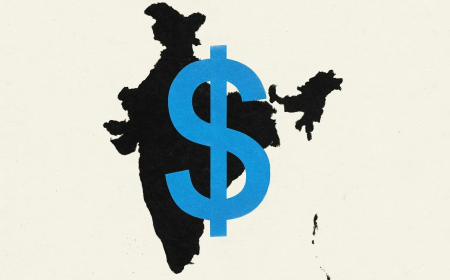SEBI Plans Regulatory Breather for FPIs Investing in Sovereign Bonds
SEBI is considering a regulatory relaxation for Foreign Portfolio Investors (FPIs) investing in sovereign bonds. Discover what this breather means for India's debt market, global investor appetite, and fiscal management.

SEBI Plans Regulatory Breather for FPIs Investing in Sovereign Bonds
Introduction: Breathing Space for Global Capital
India's financial regulator—the Securities and Exchange Board of India (SEBI)—is reportedly working on a fresh framework to offer regulatory relief to Foreign Portfolio Investors (FPIs) specifically investing in sovereign bonds or government securities (G-Secs). This move, if implemented, could significantly boost foreign capital inflows into India's debt markets and align the country’s investment climate with global best practices.
At a time when the global investment landscape is realigning in response to shifting interest rate cycles and geopolitical dynamics, SEBI’s proposal comes as a strategic step to ensure India remains an attractive and competitive destination for institutional debt investors.
Background: India's Conservative Yet Evolving Debt Policy
Historically, India has maintained a cautious approach towards FPI participation in its sovereign debt. While government securities have always been considered a stable investment class, access for FPIs has been regulated tightly due to concerns around currency volatility, hot money flows, and debt sustainability.
Currently, FPIs are permitted to invest in G-Secs under various frameworks, including:
-
Fully Accessible Route (FAR) — introduced in 2020 for certain G-Secs without any investment cap.
-
Voluntary Retention Route (VRR) — encouraging longer holding periods and stable capital.
However, despite these options, operational complexities, regulatory ceilings, and compliance hurdles continue to act as deterrents for deeper foreign investor participation.
The Proposed Regulatory Breather: What's on the Table?
SEBI, in consultation with the Reserve Bank of India (RBI) and the Ministry of Finance, is reportedly evaluating relaxations in disclosure and compliance obligations for FPIs investing specifically in sovereign bonds.
The key proposals include:
-
Simplified KYC and Beneficial Ownership Disclosures
FPIs dealing solely in G-Secs may be exempted from granular ownership disclosures, particularly where ultimate beneficial ownership (UBO) structures are layered across geographies. -
Lower Reporting Frequency
Instead of monthly filings, semi-annual or annual submissions may suffice for sovereign-only investors. -
Automatic Route Expansion
Wider eligibility under the Fully Accessible Route (FAR) to encourage participation without prior approvals. -
Simplified Tax Compliance
Rationalization of TDS norms and refund delays that often discourage debt-focused funds. -
Safe-Harbor Entry Classification
FPIs investing exclusively in sovereign debt could be classified as low-risk entities, exempting them from certain risk-based inspections.
Global Context: Keeping Up with Emerging Market Peers
India is not alone in recalibrating its debt market access rules. In the post-COVID investment cycle, countries like Indonesia, South Africa, and Brazil have opened their sovereign bond markets to foreign investors more liberally.
-
Indonesia allows near-unrestricted foreign access to rupiah-denominated government debt.
-
South Africa offers tax-efficient investment channels for G-Secs with minimal operational burden.
-
Brazil provides onshore sovereign bond access with competitive yield and no capital controls.
SEBI’s proposal is seen as a step to ensure India doesn’t fall behind in the race to attract sticky, long-term sovereign capital—especially in an era when institutional allocators are actively seeking safe-haven yield outside developed markets.
Potential Impact: Who Gains and How?
1. Foreign Portfolio Investors (FPIs)
-
Lower friction in entry and compliance will make India more attractive for global bond funds.
-
Hassle-free repatriation and investment cycles could encourage more primary participation in auctions.
-
Diversified yield baskets for pension funds, insurance firms, and sovereign wealth funds.
2. Indian Government
-
Stable long-term funding source to finance infrastructure and social programs.
-
Improved debt profile visibility with enhanced participation from global benchmarks like JP Morgan’s GBI-EM index.
-
Lower borrowing costs due to broader demand and better pricing dynamics.
3. Debt Market Ecosystem
-
Better liquidity in secondary markets, especially in longer-tenure G-Secs.
-
Enhanced depth and participation in retail debt schemes and bond ETFs.
-
More accurate yield curve formation due to increased transparency and volume.
Market Sentiment: Already Turning Positive
Even before the formal announcement, institutional chatter around SEBI’s intent has sparked renewed activity in India’s G-Sec space:
-
Gilt mutual funds have seen higher inflows in the last two months.
-
10-year benchmark G-Sec yields have softened, reflecting optimistic foreign demand.
-
Several global fund houses are reportedly working with local custodians to register new debt-only FPI accounts.
This pre-emptive interest suggests that the market is pricing in regulatory stability and anticipating a more facilitative regime for government bond investments.
Expert Opinions: Industry Voices
Asha Mehta, CIO at Global Alpha Advisors:
“India’s sovereign bonds offer some of the best real yields among major emerging markets. Reducing procedural friction will unlock significant global appetite.”
Manish Chokhani, Market Veteran and Advisor:
“This breather by SEBI is overdue. It shows a willingness to differentiate between risk profiles. FPIs in sovereign debt don’t pose systemic threats—on the contrary, they bring in predictability.”
Debdeep Roy, Partner, Tax & Regulatory at Syntaxis:
“Easing TDS and documentation rules will significantly boost FPI sentiment, especially among passive funds and ETFs.”
Strategic Rationale: Why Now?
There are three clear motivations behind SEBI’s timely intervention:
-
Index Inclusion Momentum
With India set to be included in JP Morgan's Government Bond Index (GBI-EM) in 2025, the regulatory breather complements broader reforms to welcome index-linked passive flows. -
Fiscal Prudence and Global Capital
The Centre needs to raise a record ₹14.1 lakh crore in FY25. Long-term FPI participation could ease pressure on banks and insurers to absorb this supply. -
Geopolitical Realignment
In a world polarized by the West-East divide, India is positioning itself as a neutral, stable, and high-yield destination for institutional capital.
Risk Management: Guardrails Still in Place
Despite the proposed easing, SEBI is unlikely to compromise on systemic risk frameworks. The breather is targeted, not blanket.
-
Only FPIs investing in sovereign debt may benefit from reduced scrutiny.
-
Cross-holding restrictions between equity and debt FPIs will continue to prevent regulatory arbitrage.
-
Real-time reporting and surveillance on large transactions will still be mandatory.
Thus, while the red tape may reduce, the oversight mechanisms remain intact to ensure the integrity of India's financial ecosystem.
Comparing Routes: FAR vs VRR vs Breather Model
| Parameter | Fully Accessible Route (FAR) | Voluntary Retention Route (VRR) | Proposed Breather |
|---|---|---|---|
| Investment Cap | None (for select G-Secs) | Fixed quotas | Likely unrestricted |
| Compliance | Standard FPI norms | Retention & minimum stay | Reduced |
| Disclosures | Full KYC & BO | Detailed reports | Simplified |
| Liquidity | High | Medium | Very High |
| Tax Norms | Standard | Lower under some treaties | Under review |
What Lies Ahead: Timeline and Execution
Based on available signals, the regulatory breather may materialize in the following phases:
-
Discussion Paper Release (Q2 2025)
SEBI to invite public and institutional feedback on the proposed relaxation. -
Stakeholder Consultations (Q3 2025)
Joint dialogues with custodians, clearing corporations, and global asset managers. -
Rollout of Framework (Q4 2025)
Formal notification and live implementation in SEBI circulars and FPI manuals. -
Evaluation Phase (2026)
Ongoing assessment to measure impact, refine thresholds, and possibly extend benefits to quasi-sovereign instruments like state development loans (SDLs).
A Small Move with a Big Multiplier
SEBI’s plan to offer regulatory breathing room to FPIs investing in sovereign bonds may look technical on the surface—but the implications run deep. It sends a strong signal that India is prepared to welcome stable, long-term capital with open arms, without compromising its regulatory vigilance.
The timing couldn’t be better. With global funds in search of yield, and India being inducted into major global bond indices, the country stands to transform from a selective borrower to a debt investment destination—and this reform could be the pivot.
Final Word:
As India walks the tightrope between fiscal ambition and investor assurance, SEBI’s thoughtful calibration of FPI norms in sovereign debt may well mark the beginning of a more liquid, transparent, and globally integrated bond market.
What's Your Reaction?
 Like
0
Like
0
 Dislike
0
Dislike
0
 Love
0
Love
0
 Funny
0
Funny
0
 Angry
0
Angry
0
 Sad
0
Sad
0
 Wow
0
Wow
0











































































